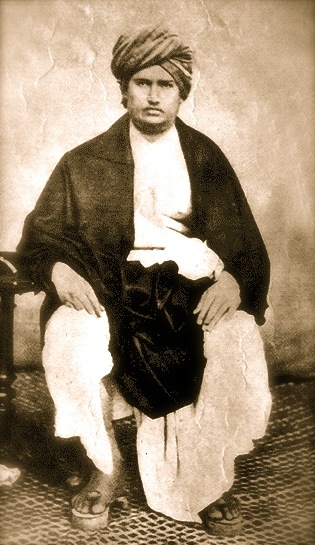
Dayanand Saraswati, was an Indian philosopher, social leader and founder of the Arya Samaj, a reform movement of Hinduism. His magnum opus is the book Satyarth Prakash, which has remained a highly influential text on the philosophy of the Vedas and clarifications of various ideas and duties of human beings. He was the first to give the call for Swaraj as "India for Indians" in 1876, a call later taken up by Lokmanya Tilak. Denouncing the idolatry and ritualistic worship, he worked towards reviving Vedic ideologies. Subsequently, the philosopher and President of India, S. Radhakrishnan, called him one of the "makers of Modern India", as did Sri Aurobindo.
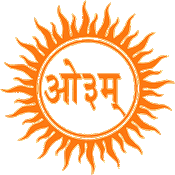
Arya Samaj is considered a monotheistic Indian Hindu reform movement that promotes values and practices based on the belief in the infallible authority of the Vedas. The samaj was founded by the sannyasi (ascetic) Dayanand Saraswati in the 1870s.
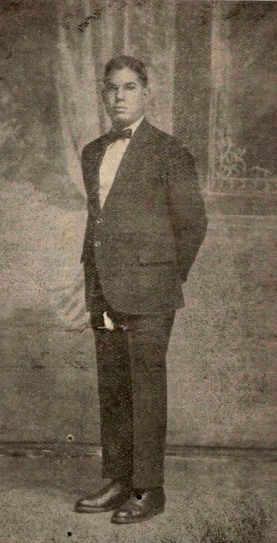
Pt. Vishnu Deo OBE was the first Fiji born and bred leader of the Indo-Fijians. From his initial election to the Legislative Council in 1929 to his retirement in 1959, he remained the most powerful Indo-Fijians political leader in Fiji. He was a staunch supporter of Arya Samaj in Fiji and also the editor of the first successful Hindi-language newspaper to be published in Fiji.
Parmanand Singh was one of the three Indo-Fijians elected to the Legislative Council of Fiji in October 1929 when Indo-Fijians were given the first opportunity to elect their own representatives. The other two were Vishnu Deo and James Ramchandar Rao. Singh was a landlord from Ba and undertook several business ventures which included publishing newspapers.
Kunwar Bachint Singh was an Indo-Fijian teacher and politician. He arrived in Fiji in 1927 as a teacher for the Arya Samaj but his association with Vishnu Deo led him to play an active role in aggressively promoting the Arya Samaj and finally into politics. He was elected into the Legislative Council as a protégé of Vishnu Deo but after the election took an independent stance opposed to the wishes of the majority of the Indo-Fijians. He supported nominated rather than elected representation, actively supported the war effort and even attempted to set up a farmers union opposed to a number of existing unions. The Government rewarded him for his loyalty by nominating him into the Legislative Council three times, appointing him as a Justice of the Peace and as the first Indo-Fijian member of the Executive Council.

Pandit Ami Chandra Vidyalankar was an Indo-Fijian educator, preacher, labour leader, politician and football administrator. He served as a member of the Legislative Council between 1947 and 1953.
Fiji Samachar was a Hindi language newspaper published in Fiji from 1924 to 1974. It was published in Suva by the Indian Printing and Publishing Company and its first editor was Babu Ram Singh.
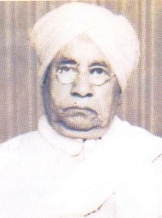
Thakur Kundan Pal Singh Kush (1881–1967) was an Arya Samaj missionary and teacher who arrived in Fiji, from Muzaffarnagar, Uttar Pradesh, India in 1928. He first taught at the Dharamshala School in Nausori where he later became the founding Head Teacher of Vunimono Arya School in 1929. He taught in a number of Arya Samaj schools which included Gurukul Primary School near Lautoka in 1939, Arya Samaj Girls' School in Saweni, Lautoka, from 1940 to 1945, Swami Shraddanand Memorial School in Suva, Vunikavikaloa Arya School in Ra, and Veisari Primary School near Suva.

The Arya Pratinidhi Sabha of Fiji is the national body for all the Arya Samajs in Fiji. It was formed in 1918 and registered as a religious body through the efforts of Manilal Doctor, who was in Fiji from 1912 to 1920 at the behest of Mahatma Gandhi to provide legal assistance to the Fiji Indians. Its first President was Swami Manoharanand Saraswati who had arrived in Fiji, from India, in 1913. The Arya Pratinidhi Sabha of Fiji is affiliated to Sarvadeshik Arya Pratinidhi Sabha based in New Delhi.
Babu Ram Singh was a Fiji Indian who had come to Fiji under the indenture system and was one of the few people who, after indenture, prospered and made an attempt to help his less fortunate ex-indentured brethren. Babu Ram Singhs surviving Business, Fiji Rubber Stamp Co Ltd is still under operation in Mark Street, Suva, and is looked after by his children.

Suriname has possibly the highest proportion of Hindus who are Arya Samajis, compared to any other country. In Suriname, the Hindu population had split, with roughly 20% following the teachings of Swami Dayanand Saraswati, founder of the Ārya Samāj, and 80% following the Sanatan Dharm. According to the census of 2012 the number of Ārya Samājĩs is 16,661. The arrival of Arya Samaj preachers in Suriname, in 1929, caused a rift in the Hindu community, between the followers of Sanātanī and the Ārya Samāj.
Hindu Maha Sabha was an organisation representing various Hindu organisations and was formed in Fiji in 1926, following the formation of All-India Hindu Maha Sabha in India. The formation of the organisation both in India and Fiji occurred after the assassination of Swami Shraddhanand, a Hindu activist in India. The formation of the Sabha in Fiji coincided with the formation of a national Muslim organisation, the Fiji Muslim League.
This is a synopsis of organisations formed by Indians in Fiji. When they became free from the bondage of indenture and were able to organise themselves, they founded numerous organizations to seek social and political justice. These organisations promoted the teaching of Indian languages and religious practices and also to help others in time of need. Some of the successful organisations are listed below in the order in which they were established. Some, such as the National Federation Party, are no longer exclusively Indian, but are still predominantly so.

Arya Samaj is a Hindu reform movement in Mauritius. Established in 1911, the Arya Paropkarini Sabha was officially registered in 1913. Since its creation Arya Samaj has had a great influence on the religious, social, educational and political lives of the people of Indian origin on the island. It has endeavoured to uphold the principles and ideals set forth by Maharishi Dayanand and his reformist movement. Some of the more notable ideals are women parity and free access to education. It has provided Hindus with a choice of progressive Hinduism, has promoted education with particular emphasis on Hindi and established orphanages, primary schools, colleges and tertiary institution.

The availability of Satyarth Prakash, inspired some people of Indian origin in Bangkok to follow the teachings of Swami Dayanand Saraswati and form the Vedic Dharam Pracharni Sabha on 5 May 1920. Weekly gatherings were held for the propagation of Vedic religion. Land was purchased and a Vedic mandir (temple) constructed. A library was also established. In 1922 the name of the Sabha (organisation) was changed to Arya Samaj and in 1923 it was affiliated with the Arya Pratinidhi Sabha of Uttar Pradesh in India. Although a small organisation, the Sabha has raised funds for relief fund for natural disasters in India. It also organises the celebration of Hindu festivals.

The Ārya Samāj doctrine, a monotheistic Hindu reform movement that rejects the idea of caste and the exclusive role of brahmins as religious leaders, first arrived in Guyana in the early 1900s with the teachings of Swami Dayanand, but grew rapidly after 1910 after the arrival of missionary Bhai Parmānand. Unlike much of mainstream Hinduism, the movement encourages proselytization and opposes the use of images and idols in worship.
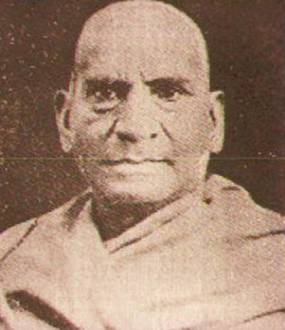
Swami Shraddhanand, also known as Mahatma Munshi Ram Vij, was an Arya Samaj sannyasi and an Indian Independence activist who propagated the teachings of Dayananda Saraswati. This included the establishment of educational institutions, like the Gurukul Kangri University, and played a key role on the Sangathan and the Shuddhi (purification), a Hindu reform movement in the 1920s.
Chhalesar is a village in the block and nagar panchayat of Jawan Sikandarpur, Aligarh district in Northern India. It is also known for being the location of the fourth Vedic school ("gurukul") founded in 1870 by the Arya Samaj reform movement. Swami Dayanand also visited here with Thakur Bopal Singh and Thakur Manna Singh.
Sanātanī is a term used to describe Hindu duties that incorporate teachings from the Vedas, Upanishads, Puranas, and other Hindu religious texts and scriptures such as the Ramayana and its many versions, as well as the Mahabharata, which itself is often described as a concise guide to Hindu philosophy and a practical, self-contained guide to life. The word Sanātanī is coined from Sanātana Dharma which refers to the idea that its origins lie beyond human history, as revealed in the Hindu texts.









